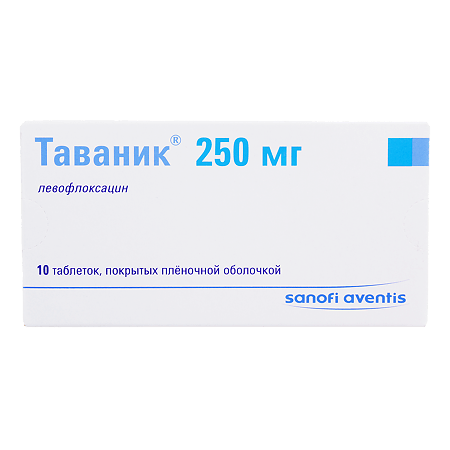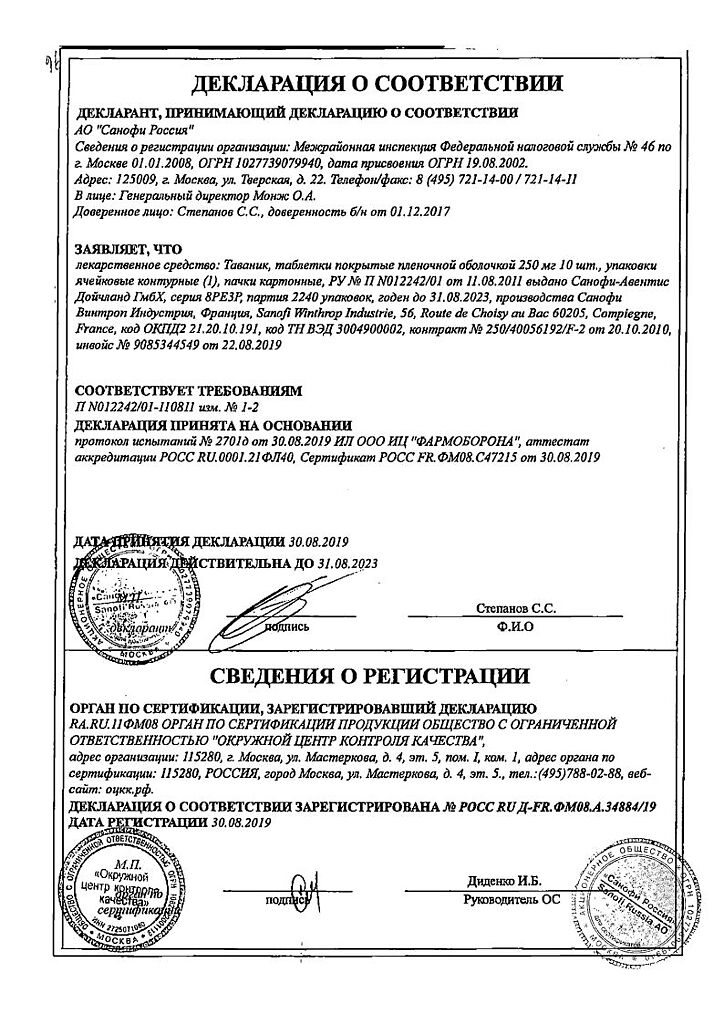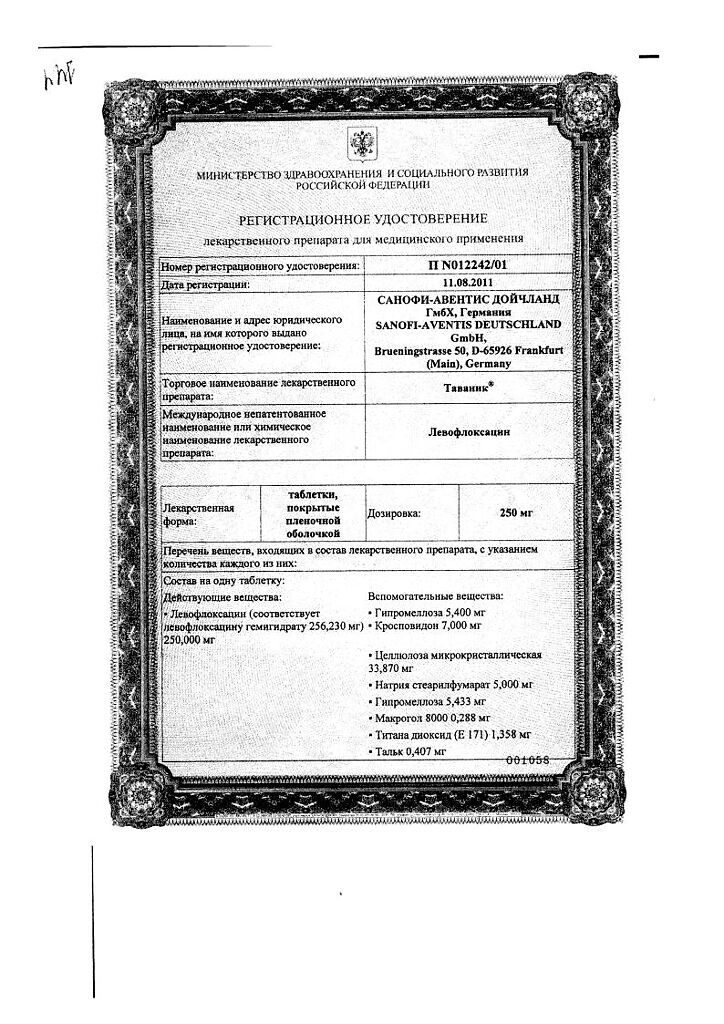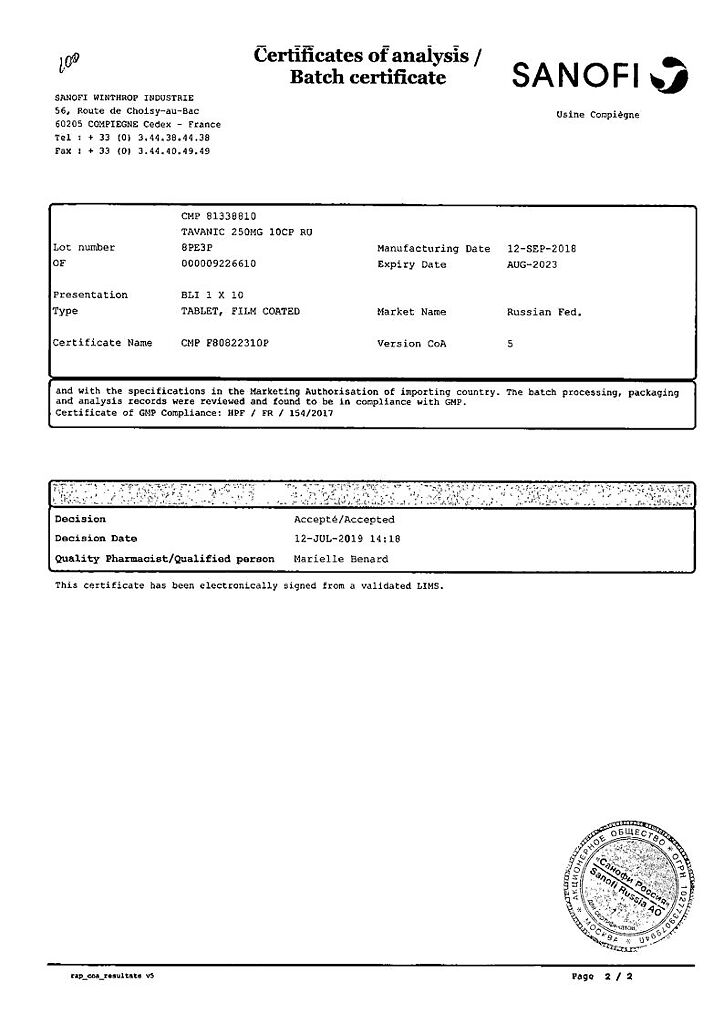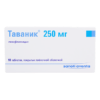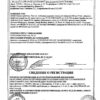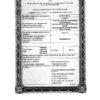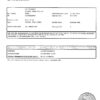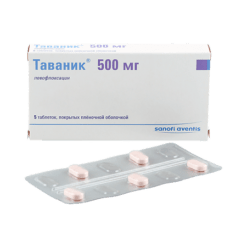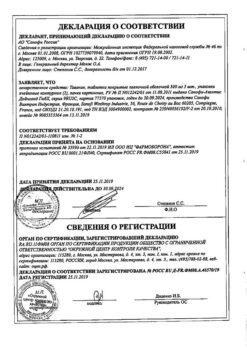No products in the cart.
Tavanic, 250 mg 10 pcs
€10.30 €9.01
Out of stock
(E-mail when Stock is available)
Description
Tavanic is a synthetic broad-spectrum antibacterial drug from the group of fluoroquinolones containing levofloxacin, the left-handed isomer ofofloxacin, as an active substance.
Levofloxacin blocks DNA-enzyme (topoisomerase II) and topoisomerase IV, disrupts superspiralization and cross-linking of DNA breaks, inhibits DNA synthesis and causes deep morphological changes in cytoplasm, cell wall and membranes of microbial cells.
Indications
Indications
bronchitis, pneumonia
otitis media, sinusitis, tonsillitis
infections of the skin, soft tissues, and urinary tract
chronic prostatitis, gonorrhea.
Pharmacological effect
Pharmacological effect
Tavanic is a synthetic broad-spectrum antibacterial drug from the group of fluoroquinolones, containing levofloxacin, a levorotatory isomer of ofloxacin, as an active substance.
Levofloxacin blocks DNA gyrase (topoisomerase II) and topoisomerase IV, disrupts supercoiling and cross-linking of DNA breaks, inhibits DNA synthesis, and causes profound morphological changes in the cytoplasm, cell wall and membranes of microbial cells.
Special instructions
Special instructions
It is recommended to continue taking the drug Tavanik for at least 48–78 hours after the body temperature has normalized or after the pathogen has been reliably destroyed.
To avoid photosensitivity, patients should not be exposed to strong solar or artificial ultraviolet irradiation.
Close monitoring of blood glucose levels is recommended in diabetic patients receiving oral hypoglycemic agents or insulin.
If pseudomembranous colitis is suspected, the drug should be immediately discontinued and appropriate treatment should be started without using drugs that inhibit intestinal motility.
If tendinitis is suspected, Tavanic should be discontinued immediately and appropriate treatment should be initiated.
During the treatment period, it is necessary to refrain from driving vehicles and engaging in potentially hazardous activities that require increased concentration and speed of psychomotor reactions.
Active ingredient
Active ingredient
Levofloxacin
Composition
Composition
1 tablet contains:
Active ingredient:
levofloxacin 250 mg;
Excipients:
crospovidone;
methylhydroxypropylcellulose;
MCC;
sodium stearyl fumarate;
macrogol 8000;
talc;
titanium dioxide (E171);
iron oxide red (E172);
iron oxide yellow (E172).
Pregnancy
Pregnancy
Tavanik is contraindicated in children under 14 years of age, as well as during pregnancy and breastfeeding.
Contraindications
Contraindications
Epilepsy, hypersensitivity to the drug Tavanic
Side Effects
Side Effects
From the heart: rarely – sinus tachycardia, palpitations; unknown frequency (post-marketing data) – prolongation of the QT interval, ventricular arrhythmias, ventricular tachycardia, ventricular tachycardia of the “pirouette” type, which can lead to cardiac arrest (see “Overdose”, “Special instructions”).
From the blood and lymphatic system: uncommon – leukopenia (decreased number of leukocytes in peripheral blood), eosinophilia (increased number of eosinophils in peripheral blood); rarely – neutropenia (decreased number of neutrophils in peripheral blood), thrombocytopenia (decreased number of platelets in peripheral blood); unknown frequency (post-marketing data) – pancytopenia (decrease in the number of all formed elements in the peripheral blood), agranulocytosis (absence or sharp decrease in the number of granulocytes in the peripheral blood), hemolytic anemia.
From the nervous system: often – headache, dizziness; infrequently – drowsiness, tremor, dysgeusia (taste perversion); rarely – paresthesia, convulsions (see “Special Instructions”); unknown frequency (post-marketing data) – peripheral sensory neuropathy, peripheral sensorimotor neuropathy (see “Special Instructions”), dyskinesia, extrapyramidal disorders, ageusia (loss of taste), parosmia (disorder of the sense of smell, especially the subjective sensation of an objectively absent smell), including loss of smell, syncope, benign intracranial hypertension.
On the part of the organ of vision: very rarely – visual disturbances, such as blurriness of the visible image; unknown frequency – transient vision loss.
From the organ of hearing and labyrinthine disorders: infrequently – vertigo (a feeling of deviation or spinning of one’s own body or surrounding objects); rarely – ringing in the ears; unknown frequency (post-marketing data) – hearing loss, hearing loss.
From the respiratory system, chest and mediastinal organs: infrequently – shortness of breath; unknown frequency (post-marketing data) – bronchospasm, allergic pneumonitis.
From the gastrointestinal tract: often – diarrhea, vomiting, nausea; infrequently – abdominal pain, dyspepsia, flatulence, constipation; unknown frequency (post-marketing data) – hemorrhagic diarrhea, which in very rare cases may be a sign of enterocolitis, including pseudomembranous colitis (see “Special Instructions”), pancreatitis.
From the kidneys and urinary tract: infrequently – increased concentration of creatinine in the blood serum; rarely – acute renal failure (for example, due to the development of interstitial nephritis).
From the skin and subcutaneous tissues: infrequently – rash, itching, urticaria, hyperhidrosis; unknown frequency (post-marketing data) – toxic epidermal necrolysis, Stevens-Johnson syndrome, exudative erythema multiforme, photosensitivity reactions (increased sensitivity to solar and UV radiation) (see “Special Instructions”), leukocytoclastic vasculitis, stomatitis. Reactions from the skin and mucous membranes can sometimes develop even after taking the first dose of the drug.
From the musculoskeletal system and connective tissue: infrequently – arthralgia, myalgia; rarely – tendon damage, including tendonitis (for example, Achilles tendon), muscle weakness, which can be especially dangerous in patients with pseudoparalytic myasthenia gravis (see “Special Instructions”); unknown frequency (post-marketing data): rhabdomyolysis, tendon rupture (eg Achilles tendon). This side effect can be observed within 48 hours after the start of treatment and can be bilateral in nature (see also section “Special Instructions”), ligament rupture, muscle rupture, arthritis.
From the side of metabolism and nutrition: infrequently – anorexia; rarely – hypoglycemia, especially in patients with diabetes mellitus (possible signs of hypoglycemia: voracious appetite, nervousness, perspiration, trembling); unknown frequency – hyperglycemia, hypoglycemic coma (see “Special Instructions”).
Infectious and parasitic diseases: infrequently – fungal infections, development of resistance of pathogenic microorganisms.
From the side of blood vessels: rarely – decreased blood pressure.
General disorders: infrequently – asthenia; rarely – pyrexia (fever); unknown frequency – pain (including pain in the back, chest and limbs).
From the immune system: rarely – angioedema; unknown frequency (post-marketing data) – anaphylactic shock, anaphylactoid shock.
Anaphylactic and anaphylactoid reactions can sometimes develop even after taking the first dose of the drug.
From the liver and biliary tract: often – increased activity of liver enzymes in the blood (for example ALT, AST), increased activity of alkaline phosphatase and GGT; infrequently – increased concentration of bilirubin in the blood; unknown frequency (post-marketing data) – severe liver failure, including cases of acute liver failure, sometimes fatal, especially in patients with a severe underlying disease (for example, patients with sepsis) (see “Special Instructions”), hepatitis, jaundice.
From the mental side: often – insomnia; infrequently – feeling of restlessness, anxiety, confusion; rarely – mental disorders (for example, hallucinations, paranoia), depression, agitation (excitement), sleep disturbances, nightmares; unknown frequency (post-marketing data) – mental disorders with behavioral disorders with self-harm, including suicidal thoughts and suicide attempts.
Other possible undesirable effects that apply to all fluoroquinolones: very rarely – attacks of porphyria (a very rare metabolic disease) in patients already suffering from this disease.
Interaction
Interaction
They weaken the effect by reducing absorption from the gastrointestinal tract and systemic concentration: sucralfate, magnesium- and aluminum-containing antacids, iron salts, zinc-containing multivitamins, didanosine, therefore it is necessary to maintain an interval of at least 2 hours between taking these drugs and levofloxacin.
When using Tavanic and theophylline simultaneously, careful monitoring of theophylline levels and appropriate dose adjustment are necessary.
Careful monitoring of MHO, prothrombin time and other coagulation parameters, monitoring for possible signs of bleeding is necessary when using Tavanic and warfarin simultaneously.
NSAIDs may increase the risk of CNS stimulation and seizures.
Overdose
Overdose
Symptoms: Based on data obtained from toxicological studies conducted in animals, the most important expected symptoms of an acute overdose of Tavanic® are central nervous system symptoms (impaired consciousness, including confusion, dizziness and convulsions).
During post-marketing use of the drug in overdose, CNS effects have been observed, including confusion, convulsions, hallucinations and tremor.
Nausea and erosions of the gastrointestinal mucosa may develop.
In clinical and pharmacological studies conducted with doses of levofloxacin exceeding therapeutic levels, prolongation of the QT interval was shown.
Treatment: in case of overdose, careful monitoring of the patient is required, including ECG monitoring. Treatment is symptomatic. In case of acute overdose of Tavanic® tablets, gastric lavage and administration of antacids are indicated to protect the gastric mucosa. Levofloxacin is not eliminated by dialysis (hemodialysis, peritoneal dialysis and continuous ambulatory peritoneal dialysis). There is no specific antidote.
Storage conditions
Storage conditions
At a temperature not exceeding 25 °C
Shelf life
Shelf life
5 years
Manufacturer
Manufacturer
Opella Healthcare International CAC, France
Additional information
| Shelf life | 5 years |
|---|---|
| Conditions of storage | At a temperature not exceeding 25 °C |
| Manufacturer | Opella Healthcare International SAS, France |
| Medication form | pills |
| Brand | Opella Healthcare International SAS |
Other forms…
Related products
Buy Tavanic, 250 mg 10 pcs with delivery to USA, UK, Europe and over 120 other countries.

